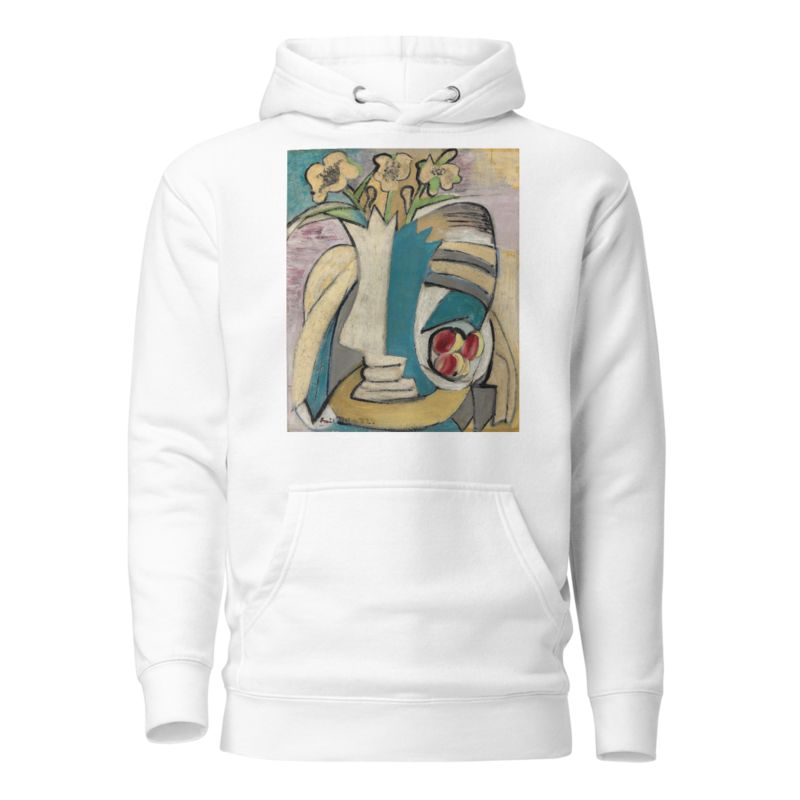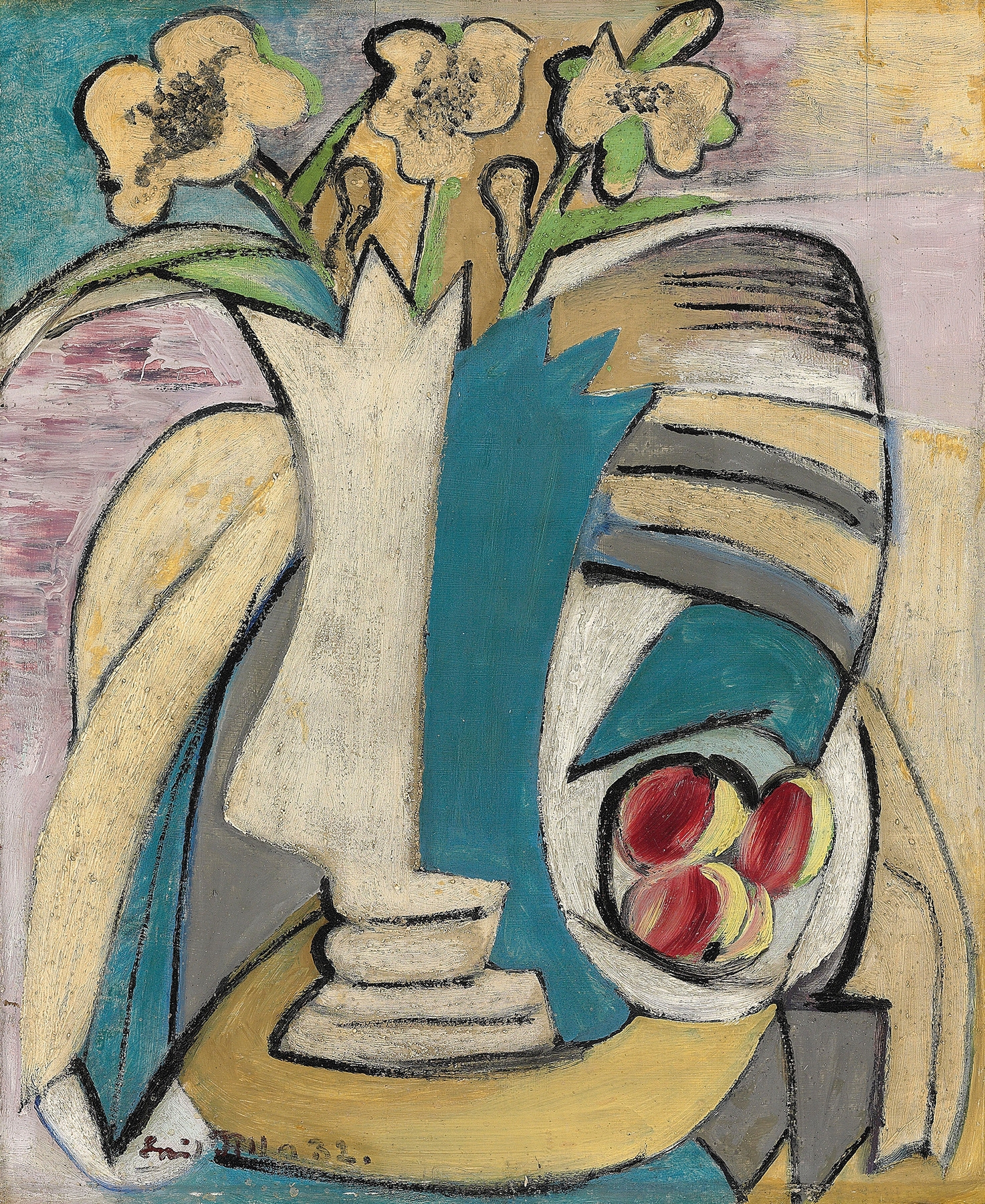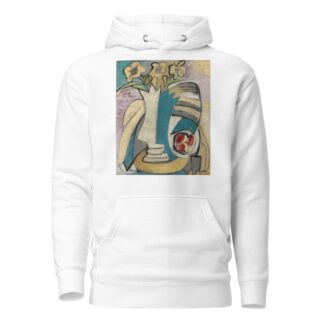Description
Váza s kyticí a broskve by Emil Filla printed on a Hoodie
About the Hoodie
Modern fit
It provides a more tailored look than a regular fit
Comfortable
The fabric and fit of this item are extra comfy
Tear-away tag
Easily removable tear-away tag that allows you to add a custom inside label
Premium quality
The product is made from premium, high-quality materials
Classic unisex hoodie with a front pouch pocket and matching flat drawstrings. The 100% cotton exterior makes this hoodie soft to the touch.
- 65% ring-spun cotton, 35% polyester
- Charcoal Heather is 60% ring-spun cotton, 40% polyester
- Carbon Grey is 55% ring-spun cotton, 45% polyester
- 100% cotton face
- Fabric weight: 8.5 oz./yd.² (288.2 g/m²)
- Front pouch pocket
- Self-fabric patch on the back
- Matching flat drawstrings
- 3-panel hood
- Tear-away tag
Emil Filla (1882-1953)
Emil Filla was a Czech painter. He was a leader of the avant-garde in Prague between World War I and World War II and was an early Cubist painter.
Filla was born in Chropyně, Moravia, and spent his childhood in Brno, but later moved to Prague. Beginning in 1903, he studied at (Academy of Fine Arts, Prague), but he left the school in 1906.
Filla was a member of the group Osma (The Eight) in 1907–1908, which had commonalities with the Fauves and also had direct ties to the German Expressionist group Die Brücke. Important works by Filla from this period include Reader of Dostoevsky (1907) and Chess Players (1908). In 1909, he became a member of the Mánes Union of Fine Arts.
Beginning in 1910 he painted primarily in a Cubist style, strongly influenced by Picasso and Braque, and produced works such as Salome (1911) and Bathers (1912). He also began to paint many still lifes around that time. In 1911, he edited several issues of Volné směry, promoting Cubism and publishing reproductions of works by Picasso. After both readers and the leaders of Mánes reacted negatively, he and others withdrew from Mánes and founded Skupina výtvarných umělců (Group of Visual Artists), which was a Cubist-oriented group.
Around 1913, he and Otto Gutfreund, produced some of the earliest Cubist sculpture made anywhere. Before World War I he moved to Paris, but left for the Netherlands when war broke out. He returned to Prague after the war. During the 1920s, he further developed his version of Synthetic Cubism and rejoined Mánes. Like many Czech modernists, he was active in design as well as in painting; in 1925 he designed paintings on glass for the Czechoslovak Pavilion at the International Exposition of Modern Industrial and Decorative Arts in Paris. In the late 1920s and early 1930s, Surrealist influence also began to show in his painting and sculpture, and he was a participant in Poesie 1932, an international exhibition in Prague that introduced Surrealism to the Czech public. He did not, however, become a Surrealist.
On the first day of World War II he was arrested by the gestapo for his anti-Nazi activism together with painter Josef Čapek and others and was subsequently imprisoned in German concentration camps Dachau and Buchenwald. However, he survived, returned home and began to teach at the Vysoká škola uměleckoprůmyslová v Praze (VŠUP—Academy of Arts, Architecture and Design in Prague). Filla’s teachings at the Academy ensure the continuance of Czech Cubism, and his influence is notable in the works of his pupil Milos Reindl amongst others.
In 1945, he was the first artist to be given a post-war exhibition at Mánes. After the war, he exhibited mainly works from the cycle Boje a zápasy (Fights and Struggles), and later mainly produced landscapes. During his lifetime he was active as a painter, sculptor, collector, theoretician, editor, organizer, and diplomat. From 1947 to 1952, he lived and worked in the castle in Peruc. In the southern wing of the castle, where he lived, today there is a memorial hall with his paintings. He died on 7 October 1953 in Prague and is buried in Střešovice district of Prague.
He idolized Vincent van Gogh, Pierre Bonnard and Edvard Munch as well as Picasso and Braque.






Reviews
There are no reviews yet.